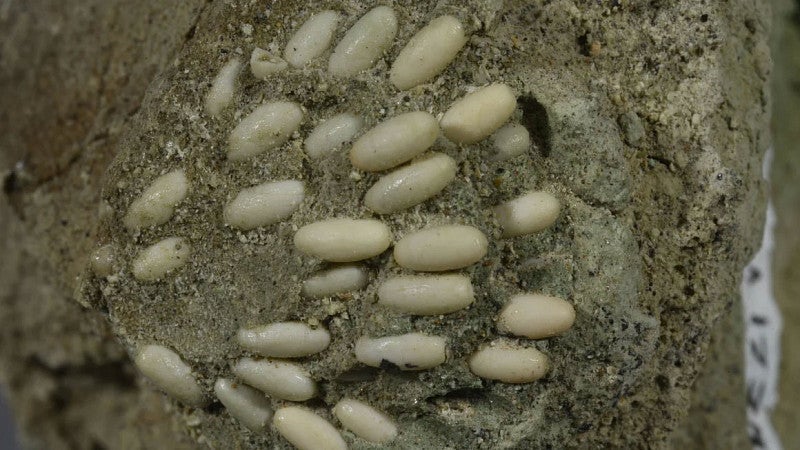Newly Published Research examining 29-million-year-old fossilized grasshopper eggs found in Oregon benefitted from CT scans conducted by Senior Research Engineer Angela Lin
Researchers in the X-Ray Imaging Core Facility at the Knight Campus contributed to a recent research paper making national headlines. The paper, published in the journal Parks Stewardship Forum, details “an enigmatic fossil egg clutch” found at the John Day Fossil Beds National Monument in Eastern Oregon estimated at 29 million years old. It is believed to be the oldest and the first unambiguous fossil evidence of a grasshopper egg pod.

Angela Lin, senior research engineer and director of the UO X-ray Imaging Core Facility, conducted micro-CT scans on the fossils — a 3D imaging technique utilizing X-rays to see inside an object, slice by slice — and performed image processing to create 2D and 3D images and videos. This revealed structural arrangements inside the specimens and provided other insights that helped identify the insect eggs as likely being from a grasshopper.
Lin is a co-author on the paper, along with Nicholas A. Famoso, a paleontology program manager and museum curator at John Day Fossil Beds National Monument, US National Park Service and the Department of Earth Sciences at the University of Oregon. Lead author Jaemin Lee is an evolutionary ecologist and doctoral student in the Department of Integrative Biology and UC Museum of Paleontology at the University of California, Berkeley.
The researchers say fossilized insect eggs are a rare find, intact egg cases are even rarer and the specimen they studied — 50 eggs, along with its nest — is likely the only fossilized grasshopper egg pod on record. The research is yielding fresh insights into an ancient ecosystem and enriching researchers’ understanding of past insect life.
“Just being able to see that internal structure and really properly describe what these things look like — that was something that was really exciting for us,” co-author Famoso told CNN. “There just isn’t anything else like this in the fossil record anywhere that we know of.”
